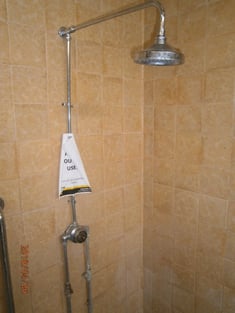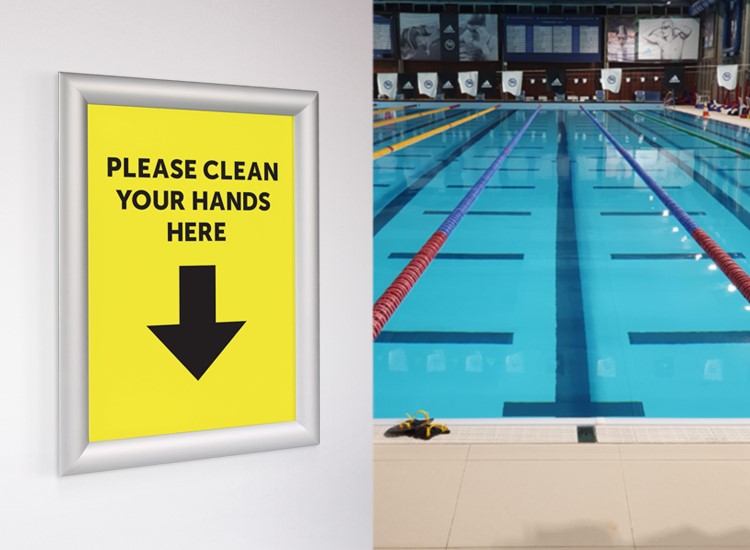Like all commercial buildings, leisure centres and gyms should follow guidance set out by the HSE regarding water safety and Legionella. Guidance such as the HSE’s ACoP L8 with the supporting HSG274 documents help ‘duty holders’ comply with regulations when it comes to domestic water systems.
The Pool Water Treatment Advisory Group’s Swimming Pool Water: Treatment and quality standards for pools and spas and the HSE’s HSG282 document offer guidance concerning pool water hygiene.
This week’s blog takes a look at what these types of buildings should be doing and what they may not have considered through our experience of working with such facilities. It will look at considerations during ‘normal’ operation of these buildings.
Legionella Control - what should you already have in place?
The following points are those that should already be considered and hopefully in place at these premises:
- A nominated ‘Responsible Person’ is appointed for both domestic water and the swimming pools;
- A Water Safety Plan in place for both domestic water and the swimming pools;
- Water Safety Records of all checks for both domestic water and the swimming pools are kept;
- Adequate Legionella training for management and those who monitor the domestic water and the swimming pools is given;
- Suitable Legionella risk assessments are in place for both domestic water and the swimming pools.
If the above 5 requirements cannot be confirmed, the organisation may be open to improvement notices and prosecution by the HSE.
Other water hygiene / Legionella considerations
Control and management of water systems is well documented in the above guidance, with set control measures to be followed. But let’s look at water hygiene considerations at leisure centres and gyms that may not be so obvious:
- Does the water or Legionella risk assessment include an assessment of the swimming, hydro pool and spa pool? These are often excluded due to skillsets of the risk assessor;
- Are the pools being sampled for bacteria? For the right bacteria, in the right place, at the required frequencies? As these do differ depending on the type of pool, from Legionella pneumophila and Pseudomonas aeruginosa to cryptosporidium and E-coli. Sampling locations for pools should be away from pool inlets and test the pool water at its ‘worst’ points and not at areas of high disinfection like plant room dosing points, its ‘best’;

- Are all the water outlets being used regularly? This includes multiple banks of showers where some shower heads are used more than others. Showers can now be fitted with automatic flushing devices, ensuring ALL showers are included in your Legionella flushing regime. Some other outlets that are commonly used infrequently are bib taps in plant rooms, emergency showers and cold water supplies to steam generators for saunas – are these in use considering recent restrictions?
- Chilled water dispensers, ice machines and water supplied vending machines, are these in use? These are typically installed on long water runs (dead legs) using small bore plastic pipework. They require regular cleaning and maintenance. Plus, do the chilled water dispensers allow for used water bottles to touch the outlet during operation? Therefore, transmitting saliva and bacteria from person to equipment;
- Pool plant operation is commonly passed to lifeguards who have limited time and expertise to carry out the tasks. The role of a pool plant operator used to be a full time job!
- Are pool user limits defined, adhered to and recorded? Humans are the highest contamination risk to a pool and from which disinfection is calculated, so do not over pollute!
- Are staff aware of exactly what to do if there is contamination incident in a pool from bodily fluids or blood? Do they know the required turnovers? Is there coagulation installed?
- Are pool toys, flotation aids and covers adequately cleaned and stored? Not left damp to harbour any bacteria;
- Are pool pre-swim showers available and used? Most European countries enforce this practice as up to two-thirds of sweat products and one thirds of bacteria are removed.
Hopefully this blog has reminded duty holders and managers of leisure centres and gyms of their responsibilities to ensure water systems are kept safe and water hygiene is maintained. Hopefully it has also highlighted any potential problem areas that may have been overlooked, because the last thing people expect is to be unhealthier when they leave the building compared to when they entered!
Feel free to reach out if you have any questions about the issues mentioned above or if you would like to consult with one of our experts on water hygiene.
Editor’s Note: The information provided in this blog is correct at date of original publication – January 2021.
© Water Hygiene Centre 2021









